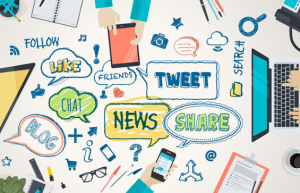As brands recognize the importance of instituting social monitoring for negative feedback, they should keep in mind that focusing only on the negative will bring limited returns. Instead, embrace the opportunity to take information and apply it to broader strategy.

Ok, let’s talk about a slight perception shift here about what you think of that call and response, and what you’ve probably been told about why your brand needs social media monitoring.
Social monitoring is crucial for reputation management but goes much further than that in its functionality and opportunity. Article after article touts the purpose of monitoring as a means specific to responding to negative commentary about a brand on social media. In essence, it’s a mini-crisis communications device. Brands need to consider that outside of their own platforms, conversations and mentions that are happening can lead to trending insights and inform new messaging directions.
A recent eMarketer article discussed how “monitoring tools help companies track and follow up on what consumers are saying on social”, yet it overwhelmingly focused on how monitoring can be used for identifying and responding to negative consumer sentiment. Not to discount the important aspect of monitoring, the article noted:

In February, American Express found that 46% of US internet users it surveyed had turned to companies’ social media sites to vent their frustrations about poor experiences.
Knowing what is being said about your brand and the marketplace you inhabit is critical not just for knowing the negative, but also for message development, ongoing feedback, and prospect targeting.
When you really dig into monitoring content and conversations around your brand all across the web, you can tap into a new kind of data resource; your customers’ direct thoughts and opinions. With the right tools, it’s possible to capture and analyze data from websites and social media channels to monitor your brand, identify key communities/influencers, address customer service issues, conduct unbiased research for the strategic formulation, and identify trends and conversational topics.
No doubt, the thought of covering every inch of where these conversations could happen is quite daunting. As the press for a time becomes an increasing factor in managing and monitoring brand accounts and pages on numerous social networks, it can be hard to keep up. Also, along with having monitoring simply set up and evaluated, it only makes sense to have a plan of how you will respond to feedback, take advantage of rising trends, and incorporate opportunities into existing plans.
The eMarketer article noted, “according to Satmetrix, only 49% of companies it surveyed worldwide in January 2012 tracked and followed up on customer feedback on social media, while 28% did neither”. If only half of the companies currently even track and follow up on feedback, I’d be shocked to know how many take advantage of steps beyond that.
When we work with clients to set up monitoring, evaluation and response system, one of the other things that we stress is looking beyond the tools themselves. Even with a determination of sentiment and influence level, responding to a negative or positive conversation should involve the input of a communications professional that understands the overarching messaging goals of your brand. Nothing can take the place of a personalized response, or the talent to effectively navigate the data being delivered from a monitoring tool.
What it comes down to is that as brands recognize the importance of instituting social monitoring for negative feedback, they should likewise embrace the opportunity to take the information they find and apply it to their broader strategy. Focusing only on the negative will bring limited returns. Take a holistic approach and reward your program in an integrated way that touches upon forward-thinking planning in addition to immediate responsiveness.
